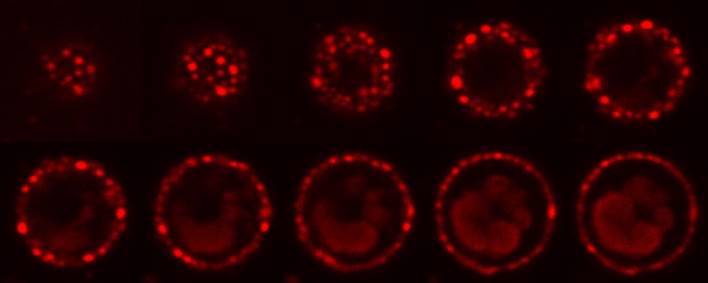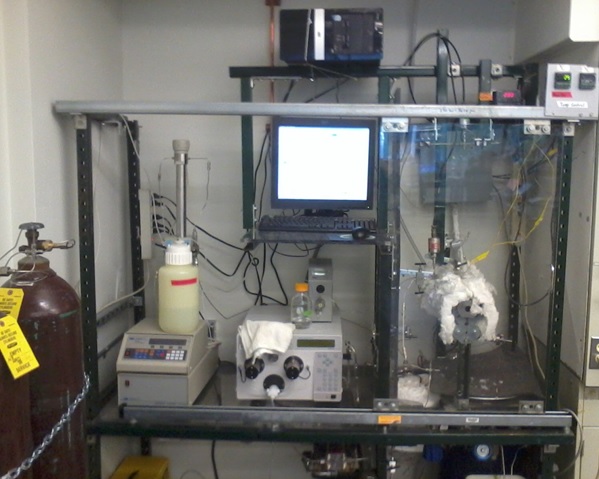Processing and Conversion of High Lipid Content Microalgae: Applications in Sonochemical Engineering and Hydrothermal Conversion
Researcher: Justin Greenly
Principal Investigator: Professor Jefferson Tester
An affordable and consistently available source of energy is as necessary to the function of our global society as food is to the human body. Having grown particularly dependent on liquid petroleum products, which are geologic reserves of ancient biomass, our society has recourse to biomass as the only renewable source of high energy density liquid fuels. Microalgae have received attention owing to their potential as a means of oil production that does not compete with conventional agriculture, requires comparatively smaller amounts of (even non-arable) land compared to conventional crops, fixes an enormous amount of carbon dioxide, and can be grown in brackish or salt water.
While microalgal biofuel processes show significant promise, many engineering challenges hamper the scale up and design. Among these are low concentration of algal cells in growth suspensions, small cell diameters, and the need for processing methods that allow water and nutrient recycle. Our research involves the development of alternative harvesting and processing methods for microalgae cultivated for biofuel production.
A key aspect of our research is the application of acoustic cavitation generated by power ultrasound as a technique for harvesting oil and other biomass components from microalgae. Ultrasonic cell disruption relies on cavitation, the violent collapse of bubbles that destabilize in an alternating pressure field. The cavitation of bubbles in the aqueous algal growth media produces severe, localized, short-lived temperatures and pressures as well as microstreaming effects that can rupture suspended algal cells. Ongoing work explores the range of conditions under which this technique may be useful for algal fuel applications. Another research direction involves hydrothermal conversion, chemical transformation done in an aqueous environment at high temperatures and pressures, which offers a way to utilize the copious water in biomass, especially microalgae feedstocks, for sustainable processing. Water has a wide range of tunable properties as temperature is varied at high pressure, which allows for chemical transformations of biomass components such as lipids.

Figure 1: The image shows 10 "z-stacks" (vertical slices) of Isochrysis, a 5 cm diameter microalga. The lipid bodies within the cell are stained with Nile Red, a lipophilic stain. The cell is viewed with a confocal microscope.

Figure 2: Schematic of cell rupture by ultrasonic cavitation and hydrothermal conversion of microalgal biomass to produce upgradeable bio-oil

Figure 3: Reactor and peripheral equipment used for hydrothermal conversion of model compound microalgae lipids. The setup allows for quick injections of liquid triglycerides into a pre-heated batch reactor for characterization of hydrolysis and decarboxylation reactions.
